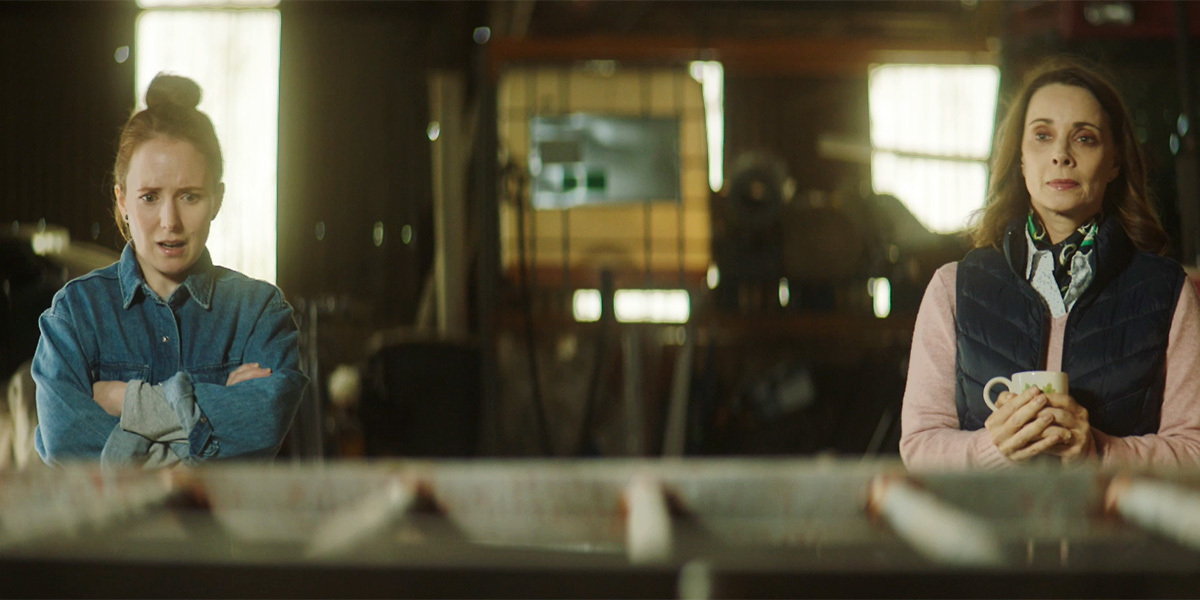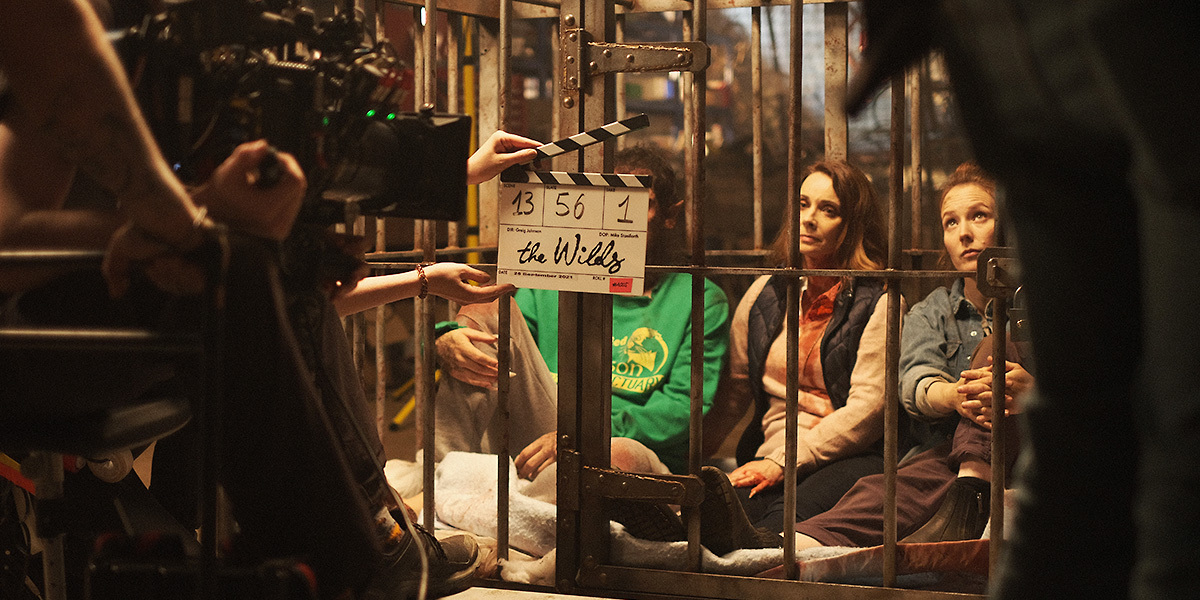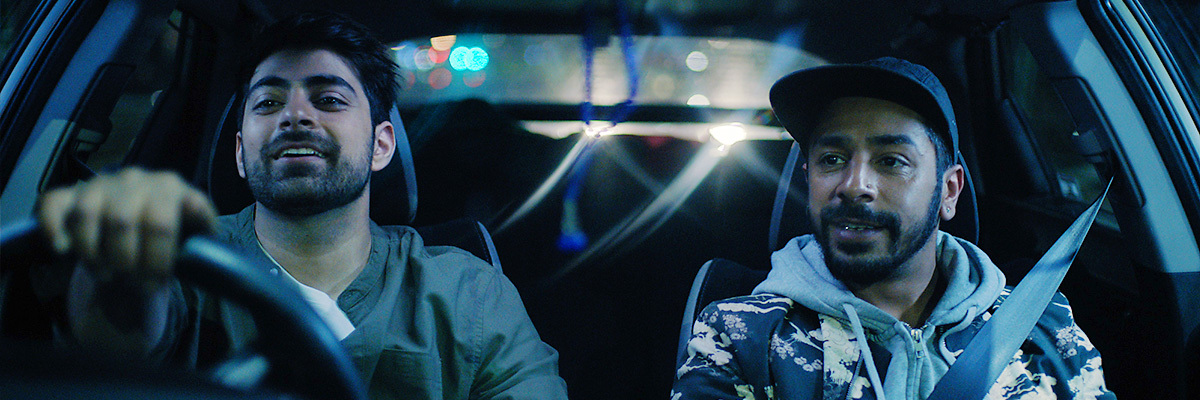Interview: Greig JohnsonWe talk to the director of The Wilds


Greig Johnson discusses The Wilds - his new horror comedy about a demonically dysfunctional family.
Meet the Wilds: a well-to-do North Yorkshire family with a supernatural secret and some savage emotional baggage to unpack. They’re the latest creation of comedian and filmmaker Greig Johnson whose film of the same name - which was supported by Film Hub North with BFI NETWORK Short Film Funding - is now streaming on leading shorts platform Omeleto.
Following the online launch - an experience Johnson describes as “nauseatingly positive” - we caught up with the filmmaker to find out more about the horrors he’s set loose on unsuspecting Harrogate. In our chat, we talk about Johnson’s return to short films after years as a YouTube creator, his hand-crafted approach to movie world-building, and the importance of writing what you know - even when you’re writing about a family of werewolves.

Congratulations on the online launch of The Wilds. How does it feel to have the film out there for everyone to see?
It’s amazing. Because the first thing everyone asks when you’ve made a film is: “Where can I see it?” As soon as you share something - even if it’s just a tiny teaser - people instantly ask that. We were first asked that question at least two years ago!
We could have put it out there ourselves, but we waited for it to find a home that had a bit more of a profile - and that’s paid off. And now it’s really exciting; you get to share it and see people react to it. And that’s the whole point; it feels like you finally have an audience.
Before the online launch, we had an awesome time on the festival circuit. Celluloid Screams in Sheffield was our first, and possibly our best, crowd; they were really reactive.
And sitting with a crowd was so useful to me. I’ve now written a feature version of the film, and getting to see the short with an audience has been an invaluable part of that process. It’s great to be able to tweak the script based on how the film felt with an audience.
A lot of the work you’ve made recently has been short form sketches on YouTube. Where does The Wilds sit relative to that work?
Years ago, before YouTube, I was a graphic art and design lecturer, specialising in animation and film. I did a PhD and I made a load of shorts around that time. And then, almost as an antidote to my PhD, I started doing comedy sketches on the side. Matt Lucas saw them and liked them, and that’s how I ended up with a performance agent as a sort-of comedian.
But I was always performing so I could be a filmmaker. And The Wilds was a very conscious decision to go back to short films. I was always clear that this is not a comedy sketch. I knew that it was going to be a 15-minute, dialogue-led character study. I wanted to do something deeper and to see if I could pull off a proper character arc.
Once you’ve written a lot of comedy sketches, you get into the rhythm of them. You know to do the set-up, the rule of three, the twist at the end, and then you’re out. You’re slightly on rails with that format. So I was looking for something different.
Even though I haven’t made the feature film yet, having written a 90-page script feels like a huge achievement to me. And I think The Wilds short film is the thing I’m most proud of out of everything I’ve made.
How did it feel to be returning to short filmmaking and working with a bigger crew?
There was a big lead-up time to the production itself, because it all took place around the pandemic. I wrote it in March 2020 just before lockdown, and then we had lots of false starts with the shoot. It was a really long process, so I was thinking about it by myself for years.
In that time, I did the music for it; there’s a song called German Hairstyle that plays in the film that Anna and Graham recorded when they were younger - I had the time to make that song. And I made some props; things like the werewolf cage and the posters you see hanging in Graham’s room. So, in a way, I was still working on my own, because I could always be cracking on with something for the film.
But to actually arrive on set and have a Producer and a crew there took loads of the stress out of it for me. My Producer Adam Bouabda knows everybody in the North East and was able to source a great crew. It was a really happy three days for me.

Tell us about that hand-crafted approach you take to your work, and the importance of those details in the film?
I love it. To me, none of that stuff is in there for no reason.
The film is very autobiographical, and I wanted to make up as few things as possible. There’s details like Digby the dog - that’s my brother’s dog. Father Richard was the vicar in the village where I grew up. My brother and I used to be in a band, just like Anna and Graham.
And then it becomes about how those details are used in the film. With the song - German Hairstyle - it’s about how listening to their old song makes Anna go back to the house; and that’s what sets off the finale. That song is actually a huge plot point, so it made sense to invest time into creating it properly.
Or take the opening scene where Graham wakes up covered in blood in the woods. The t-shirt he’s wearing is soaked in blood so you can’t really tell, but it says “Wild Welding & Fabrication” on it. The backstory is that it's his dad’s old company and they have this stack of old t-shirts lying around. I thought: “If you’re a werewolf, you’d wear old t-shirts because your clothes are going to get destroyed.” So I designed a little logo for that.
And in his day-to-day life, I knew Graham should be wearing a band t-shirt. But we couldn’t license any, so I made up a band called Spider Meat, and I made Graham their t-shirt by doing a bit of bleach painting.
I really love all of that. I’m slightly impatient and I just want to get on with making things, so I find that creating these details is a great way to deal with the fact that pre-production is a year long! And I hope people notice them.
I’m not into that The Lord of the Rings sort of approach, where they’re all wearing authentic elven underwear or whatever, and no one will ever see it but it’s good for the actors. My attitude is: if it’s not on screen, don’t do it. But if you are putting it on screen, do it properly and hope that it’s appreciated.
What about the practical effects in the film?
I would have loved to have really gone to town with that in The Wilds, but budget and COVID were constraints, so we just had to do our absolute best.
I’m really happy with the look we achieved. Mark Danbury and Pat Nowacka are amazing prosthetics artists.
The limitations were pretty huge. We couldn’t do life casts of the actors, and the process of making existing applications fit on to someone else added on about 2 hours of work. We had to use off-the-peg fangs because we couldn’t travel to get casts of the actors’ teeth. The glowing eyes were done in post because we couldn’t afford the insurance you need for using contact lenses. So there’s limitations, but ultimately the film is driven by the dialogue and the characters.
I’d definitely go further in a bigger budget feature. My big hope for the feature is that we can think of an original werewolf transformation. Because there’s been so many of them, and we need to think of something that’s our own.
What drew you to the werewolf as a horror archetype?
I guess it’s wildness. The film is a story about healing the rift between generations; it’s about these contrasts of conservatism and anarchy, and trying to find a middle ground where this family can survive. I think werewolves are a really useful metaphor for all that.
I was really interested in the idea of repression within that family; I wanted to explore the notion that putting yourself in a cage every month is never going to be a long-term or healthy solution to the problem that you need to deal with.
There is an autobiographical element to that situation as well. I had a thought about how my older brother was difficult as a child and I was the quiet sibling who had to watch that play out - and it struck me: oh, maybe the film is about that.
Early on in the development process, we had all of these discussions about who the protagonist was. That was great, because it made me certain that the film was not about a protagonist becoming a werewolf; it’s actually about what it’s like to be the sibling of a werewolf.

Are you excited by the prospect of developing a feature version?
Absolutely. I’d film it tomorrow!
One of the lovely things I’ve come to realise about directing - whether you’re on set or you’re in a development meeting with someone - is that you only have to be an expert in that specific movie.
I just feel like I know this film so well. It’s very much my world and I know what the tone should be and how things should be delivered.
For me, it really was a case of consciously writing what you know. And that paid off so well, because there were no questions about lore, or the world, or the characters that I felt I didn’t know the answer to.
How do you approach “writing what you know” in a genre scenario like The Wilds?
I think that process always works in a genre setting.
Among the cast and crew, we talked about Edgar Wright and the Cornetto trilogy a lot. It’s inevitable when you do an English horror comedy that’s what gets mentioned. But it’s not the cinematic style of those films that was the interesting reference point for me. Instead, it’s Edgar Wright and Simon Pegg’s scripts.
Particularly The World’s End. Which, generally, I’d say is the least popular of that trilogy. But, for me, that was a really touching script. Maybe it’s because I’m a certain age, but I could see that film was really clearly about aging and the world changing and coping with addiction. I think it’s got the most heart of the trilogy, and it’s the one where the genre elements are most clearly a metaphor for what’s driving the plot. It was the most affecting film of the trilogy for me, so I was definitely trying to take inspiration from that.
Using autobiographical detail in the way that I have can be a bracing experience. I think if you’re slightly worried about your mum watching it, then you’re probably in the right place; you're at a point where you’re admitting something or sharing something that makes you vulnerable. Somebody said to me the other day that The Wilds was the “most Greig” thing they’d ever seen. That feels like you’re hitting the bullseye; that’s how you find your directorial style.
Watch The Wilds
The Wilds was supported by Film Hub North with BFI NETWORK Short Film Funding. A feature version is currently in development, and has been supported by Film Hub North with BFI NETWORK Early Development Funding.







